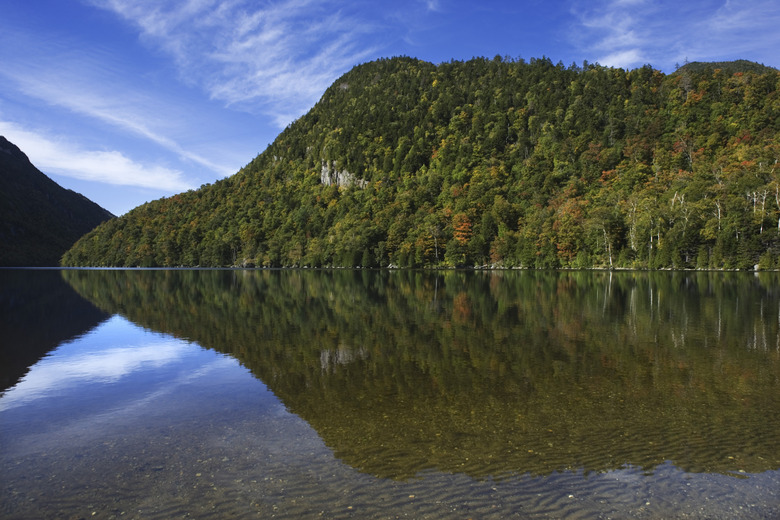Environmental Problems In The Lakes Of The Adirondack Mountains
The Adirondack Mountains, located in the northernmost area of New York, are part of the largest park and forest preserve in the continental United States, with six million acres of constitutionally protected land. While the beautifully serene area is home to 46 mountain peaks, 2,000 acres of hiking trails, and over 3,000 lakes and ponds, many of the lakes in the Adirondacks became so acidic in the late 1980s that they could no longer support their fish species. Sulfur dioxide, caused by acid rain, was responsible for this acidification process and, despite the Clean Air Act of 1990, the lakes of the Adirondacks have yet to fully recover.
Causes of Acid Rain
Causes of Acid Rain
Acid rain, which is responsible for 75 percent of acidified lakes and 50 percent of acidified streams in the United States, is caused by the release of chemical precursors into the atmosphere by natural processes, such as volcanic eruptions and decaying vegetation, as well as man-made processes, primarily from fossil fuel combustion for the generation of electrical energy. These precursors combine with water, oxygen and other chemicals within the atmosphere, creating sulfur dioxide and nitrogen oxides. The chemicals then combine with water droplets and fall from the atmosphere, acidifying the land and waters upon which they fall.
Effects of Acid Rain
Effects of Acid Rain
The effects of acid rain are most clearly seen in aquatic systems such as lakes, streams and ponds. Most aquatic systems have a neutral pH range of 6 to 8. Lakes that are affected by acid rain have a lower pH, which correlates to the acidity of the water. As acidity increases, aluminum begins to release from the soil, further increasing the toxicity of the environment. The acid and aluminum contamination harm the flora and fauna species, with a drop in one pH unit corresponding to the loss of approximately four plant and fish species within an ecosystem.
Acidification in the Adirondacks
Acidification in the Adirondacks
The soil in the Adirondacks has a low buffering capacity, which is the ability of a soil's natural composition to neutralize acidic contaminants. This makes the lakes and streams highly susceptible to acidification and the release of aluminum from the soil into the water systems. Along with acidification caused by the process of acid rain, the lakes of the Adirondacks are also susceptible to episodic acidification, which occurs after a heavy rain or snow melt.
A Slow Recovery
A Slow Recovery
While none of the lakes in the Adirondacks have fully recovered, the health of many of the lakes has improved as national air pollution levels have decreased. All of the lakes, which have been monitored over the past 12 years to study the effects of acid rain, are becoming less acidic. Many of the fishless lakes are now ready for species reintroduction.
Cite This Article
MLA
Sheldon, Elizabeth. "Environmental Problems In The Lakes Of The Adirondack Mountains" sciencing.com, https://www.sciencing.com/environmental-problems-lakes-adirondack-mountains-19894/. 24 April 2017.
APA
Sheldon, Elizabeth. (2017, April 24). Environmental Problems In The Lakes Of The Adirondack Mountains. sciencing.com. Retrieved from https://www.sciencing.com/environmental-problems-lakes-adirondack-mountains-19894/
Chicago
Sheldon, Elizabeth. Environmental Problems In The Lakes Of The Adirondack Mountains last modified August 30, 2022. https://www.sciencing.com/environmental-problems-lakes-adirondack-mountains-19894/
